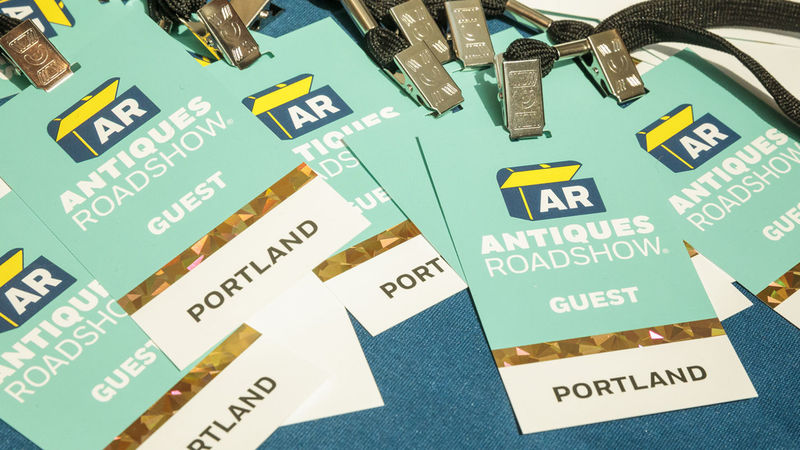Late one glowing summer morning when I was an uncomplicated, cheerful 10 or 11 and Tom was a crusty, jaded 15, and we’d been out adventuring with our mother on a summer road trip, we stopped in Ohio to visit ancient Aunt Marie, who walked us boys over to the house next door where we would spend the day with our 60-something cousin Ernie.
I know. Lame. A wasted summer day. Marie and Mom had something family to do and Ernie could’ve been playing 18 holes — I could see it from the golf shirt when he opened his door.
But it wasn’t a brush-off at all, and Mom and Aunt Marie knew it.
See, Ernie was a retired ballplayer. He fed us sliced steak on paper plates and we munched on corn chips as we watched re-runs of M*A*S*H and some movie that made kid-me feel like a teenager. But that ballplayer part: my brother didn’t care about baseball, so at one point Ernie invited just me outside to have a catch.
You can look him up in The Baseball Encyclopedia. Ernie Kish got his shot in 1945. He was 27 and handsome, played 43 games in sun field for Connie Mack’s Philadelphia Athletics and hit a respectable .245. And there we were, throwing a baseball in his backyard in Solon, Ohio.
Ernie stuck around Philadelphia after his playing days and would visit the clubhouse when he went to games at Shibe Park. In 1949, he got the team to sign a ball for my father, who’d have been 11 at the time. Years later, Dad gave that ball to me. Mostly, it’s rested in a spherical plastic display case on a shelf in my closet, waiting for the day when my youngest children are old enough to look without whacking it through a neighbor’s window.
I spent one day of my life with dad’s cousin Ernie, one day on a road trip when I was maybe 10 or 11. I didn’t say it was a great story. But in August I took Ernie’s baseball to Antiques Roadshow, so I’m not done telling it yet.
The item
Here’s a better story.
Sometime in the frigid late winter of 1968, an economics major at Notre Dame named Daniel Farrell bought a white Pontiac Tempest from his statistics professor, Dr. Gregory Curme. It was six years old — not yet a classic, though years later it sure would be — but it was cool and well-kept, sporty, a convertible. Dan would use the car to speed through the Indiana countryside on warm-weather weekends, stopping in at antique shops to pass the time and furnish his South Bend apartment.
If you had to pick a story to get acquainted with Dan Farrell ’69, I think this is the one. Because just as important as the car itself was the sticker Farrell told Curme to leave on the window as part of the arrangement — the sticker that secured Farrell a place in the faculty parking lot. Already at age 20, Dan Farrell had an eye for the deal.
To understand this talent, you could delve into the details of the movies Farrell financed as a young representative of the First National Bank of Chicago’s media division, mastering the art of what he calls “special financial effects” over the next 10 years while moving from Chicago to London to Los Angeles. But what we’re getting to here is the deal he cut in 1980, when he was burning out on the film industry and its punishing requirements for success. Looking for new opportunities, he bought the rights to reproduce in the United States a popular new BBC show.
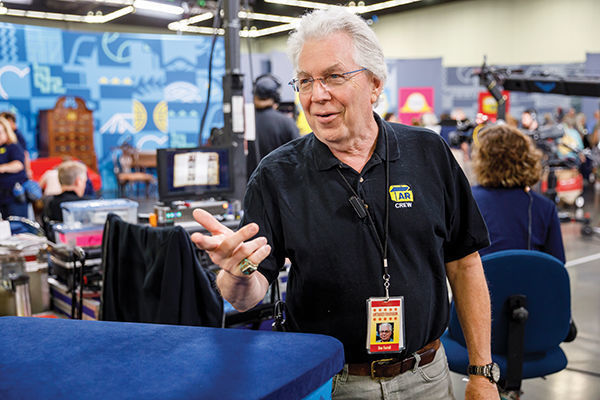 Antiques Roadshow’s army of appraisers describes consulting producer Dan Farrell ’69 (above) as generous, amazing, “steady as a rock,” kind, honest, quiet, smart, “the Dos Equis guy.” Adds sculpture authority Eric Silver: “A lot of people do it because they have this wonderful feeling about Dan. And we’ve all benefited from it.” Photos throughout by Leah Nash
Antiques Roadshow’s army of appraisers describes consulting producer Dan Farrell ’69 (above) as generous, amazing, “steady as a rock,” kind, honest, quiet, smart, “the Dos Equis guy.” Adds sculpture authority Eric Silver: “A lot of people do it because they have this wonderful feeling about Dan. And we’ve all benefited from it.” Photos throughout by Leah Nash
Antiques Roadshow, the original BBC version, got its start when the wife of a producer named Robin Drake dragged him along to an Heirloom Discovery Day at Sotheby’s auction house and the chain pulled on the Tiffany lamp inside Drake’s brain. What if you could get ordinary Britons to bring out their old but everyday things and tell their stories on camera to experts who’d know something about their value? You’d see loads of kitsch, true, but you’d find plenty of rare, fascinating and gorgeous items as well, and now and then you might discover something of genuine historical importance when, for instance, it turns out that the portrait in grandmum’s will is a Gainsborough. You could capture reactions in the moment and film it in the manicured gardens of English estates. And of course no one would mind learning history that way.
Farrell caught the show sitting in his London hotel room one Sunday evening and thought, Here’s something worth taking home with me. It was the Eighties: cable television was opening new markets, All in the Family and Sanford and Son had proven the crossover potential for British shows repackaged for American viewers, and Farrell knew people who knew people. The BBC was receptive, and before he knew it Dan Farrell was flying home with the rights to remake the antiques-appraisal hit in America and an agreement that the BBC couldn’t compete with him there. All for cheap: about $1,250.
There you go, Nation. It would take Farrell another 15 years and several false starts to get it going, but he eventually struck another deal to produce an all-American Antiques Roadshow with WGBH in Boston. And for the past 22 years, some 8 to 10 million of us have tuned in to our local PBS affiliates on Monday nights and watched strangers talk about cool beautiful stuff for an hour, meeting each other on camera, sharing what they know and cooperating to tell brand-new stories that we all get to hear and see together for the first time. It’s vignette history. It’s our weekly dose of something we didn’t already know; it’s mysteries solved and new ones afoot. It’s a household word, it’s our first — and arguably our only genuine, honest-to-god unscripted and unstaged — reality TV show. It’s a unique square in the patchwork quilt of American popular culture. And every once in a while, the familiar punchline discovery at the end, the audience-payoff moment with the dollar signs attached to it, is a piece of information that changes someone’s life.
Little thrills. All the feels. Pure entertainment with a dash of education and no commercial breaks. And if you want one person to thank for it, Dan Farrell is your man.
The show
“Good morning! Welcome to Antiques Roadshow. If you have a firearm, please check in with police at the security table before entering the hall.”
It’s 8 a.m. on a Saturday in August and I’m walking down the wide, red-carpeted corridors of the Oregon Convention Center in Portland. I’m one of the few guests who isn’t wheeling a dolly, stroller, rolling suitcase or child’s wagon laden with eye-catching curios or a cardboard-concealed treasure chest of one size or another — my autographed baseball is nestled safe in a brown cotton sack inside my backpack. Down the way from the greeter’s tables and through an open door I spy Roadshow’s neighbor for the day, the 2017 IFPA World Footbag Championships and small circles of alert, happy people kicking tiny beanbags or juggling pins.
The better spectacle by far is inside Exhibit Hall C, where an orderly but lengthening queue of Roadshow guests is coiling through a maze of stanchions that would make even the most seasoned Disney World ridegoer gasp. Maggie, my volunteer escort, whisks me past the maze, past the 18-wheeler studio truck, the curtained green room and the four “triage tables” where guests first present the two items they’re allotted to bring in for appraisal, and we blow right by it all into Exhibit Hall D, where a cherry red midcentury love seat is rolling off the first of three brightly lit studio sets and several hundred people are making that familiar, conversational din of Antiques Roadshow background noise that I recognize from the TV broadcasts.
Portland is PBS’s No. 1 market for everything, and Roadshow is no exception. This is the show’s third visit to the city in 22 seasons, not including the 2012 episodes that were taped two hours down Interstate 5 in Eugene. Some 23,000 fans, I’m told, applied for the pairs of tickets that would entitle them to spend hours waiting in line for their turns with professional appraisers, and the show is 100 percent committed to making sure that each guest leaves with at least a smidgen of new knowledge about their prized possessions and a “verbal approximation” — not a formal appraisal — of each piece’s value.
By the end of the day, 13 hours hence, all 5,078 official guests will have snaked their way through the main triage line into the shorter lines that lead to the 26 category tables, from Ancient Art to Musical Instruments to Watches, learned something worthwhile and walked out the door. That’s more than 10,000 spot-appraisals performed by 70 or 75 appraisers, roughly 10 informational transactions per auctioneer or antiques dealer per hour. About 120 of them get taped for television.
“It’s a lovefest,” says Suzanne Perrault, a glass and tile expert from Rago Arts & Auction Center in New Jersey who’s been a Roadshow appraiser since the first tour in 1996. “It’s about a relationship with people. If you don’t like people, this is hell for a day. If you do, it’s pure unadulterated love from people who are happy to be there, happy to reach the front of the line, happy to tell you stories.”
Standing in the geographical center of this whirling universe of material culture, logistical efficiency and delectable hope is calm Dan Farrell, Roadshow’s consulting producer. Now silver-haired and 70, two-way radio on his belt, he’s still smiling as big as he was 20 years ago when the show was catching fire. “They did finally radio and tell me you were coming,” he says, “but I was out solving a little problem with triage.”
The pearly gates of the triage tables were Farrell’s domain for years, and this is an important point because the single most valuable asset he brought to WGBH beyond the rights he signed over in 1995 was his firsthand knowledge of the antiques world. Not so much the artifacts themselves, for which he had boundless curiosity and a generalist’s grasp, but the people who handle, research and evaluate them to earn their daily bread. Farrell, who in his second career prior to Roadshow built an art and antiques book-distribution business and read a lot of his own stock, knew these appraisers as his customers, and he knew what they knew and what they didn’t know. This asset was much more than a Rolodex (speaking of antiques). It was a living, growing, personal network of expertise and goodwill, and on Roadshow it meant that when guests stepped forward with something he’d never seen before, as they do, thousands of times a day, he knew where to send them — and who to send them to.
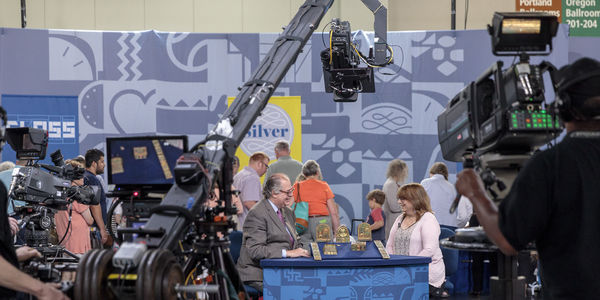
Past triage, the longest lines typically build up at the Collectibles, Paintings and Arms & Militaria tables. In some cities, Portland being one, the lines for Asian Arts and Tribal Arts might be out the door. Photography is usually light, Farrell says, and Pottery & Porcelain has declined over time. But as the show’s producers repeatedly point out, they never know what will turn up on any given Saturday. “Good stuff has feet,” executive producer Marsha Bemko likes to say — which helps explain a thousand counterintuitive discoveries like the 1776 French instrument made by Marie Antoinette’s favorite harp-maker that turned up in Tucson. All of which means that the preseason homework Farrell does with Bemko and supervising producer Sam Farrell (no relation, though Dan refers to the expat Brit as his “illegitimate cousin”) to assign particular appraisers to each of the show’s six summer tour stops is vitally important to success, even if much of the who-goes-where comes down to carefully considered guesses.
Dan Farrell left triage some years ago for the out-in-the-open backstage area where the production team huddles to hash out decisions and issues throughout the day. Opposite where he greets me beneath the large square lighting truss are the three on-camera sets, arranged in a horseshoe, where the formal appraisals are filmed. Surrounding all of this is the wide circle of blue background drapes, appraisal tables and milling guests.
Backstage is where some of Farrell’s other loosely defined roles emerge. A big one is flow control — relaying reports on ticket numbers to producers and security, and keeping the master clipboard on which appraiser is taping what item, where and when. Then, as the guy in the black AR staff polo shirt whom the talent knows best, Farrell serves both as ombudsman for appraisers’ concerns and as disciplinarian when they quibble with producers over items they’re pitching — or, less commonly, with unhappy guests. “I’ll take their side if I think it’s right,” he says of the appraisers. “And I’ll tell them to grow up if I think they’re wrong.”
He has one other “gameday” job: second-string security coordinator, a serious business that supervises in-house personnel, plainclothes and uniformed police officers and a K-9 unit, and covers everything from gun checks to crowd control to escorting guests from the hall when an appraisal exceeds a top-secret dollar amount, shielding them from undesirable attention. Farrell’s qualification? Nine years as a mayor-appointed police commissioner in his Massachusetts hometown. Sean Quinn, the former NYPD detective and head of security whose fluency in Irish and familiarity with Ireland’s history occasionally draws him into unofficial consultations on items from the Emerald Isle, calls Farrell “Commissioner Gordon” to his “Chief O’Hara.”
I remember one dealer, early on, he said, 'If Antiques Roadshow comes anywhere near me I'm going to go to the hall and roll a hand grenade into it.'
This morning, though, it’s business as usual, which means that when a guest arrives with a whale’s inner-ear bone mounted on another piece of whale bone it’s Farrell’s genius for the appraisers network that’s indirectly on display. Ken Farmer, an independent consultant from Charlottesville, Virginia, receives the strangely sculptural piece at the Folk Art table, and when his own intuitions run short, he calls over to Ancient Art for some spot insights from Anthony Slayter-Ralph, a Santa Barbara-based international antiquities and modern fine arts dealer who happens to be an avocational naturalist. Slayter-Ralph gives Farmer enough background to pitch the piece to a producer, who bites on the idea and sets Farmer and the guest up for an informal, over-the-shoulder appraisal. Bang: 60 seconds of potential prime-time television born of an unlikely collaboration between two professionals who’d have no reason to know each other’s expertise if not for their long-term involvement with Antiques Roadshow. Farrell’s recruits strike again.
The pitch
Back in 1996 as Roadshow was feeling its way through its first tour of 13 U.S. cities, Farrell cold-called David Rago, a ponytailed, young-turk ceramics authority from New Jersey who came recommended by a mutual friend. They’d spent 10 minutes on the phone, Farrell making his appeal, when the would-be recruit asked for clarification. “Let me get this straight,” Rago recalls saying. “We gotta pay our own way. You don’t pay us. You don’t guarantee we’re gonna tape. And, if we tape, you don’t guarantee you’re going to use it. Is that right?”
Rago had heard correctly. This was public television after all. There was no budget to underwrite expenses, no promise yet of compensation in the form of a star turn on national TV as an authority in one’s field. It was all risk with a fingers-crossed hope of payoffs for everyone in the end — if they all gave it their best shot. Which explains why to this day, Farrell is unwilling to take credit as the one guy who brought Antiques Roadshow to America. “I don’t think anybody’s more aware than I am of how much collaboration it takes to do this,” he says.
Rago initially turned Farrell down. But he was curious enough that he and his wife and business partner, Suzanne Perrault, decided to visit a colleague and friend in Kansas City and drop in on the tour as it passed through town. As he recalls, “Within three minutes, we said ‘OK! This thing’s what they say it is. This thing’s gonna work.’ We just knew it.”
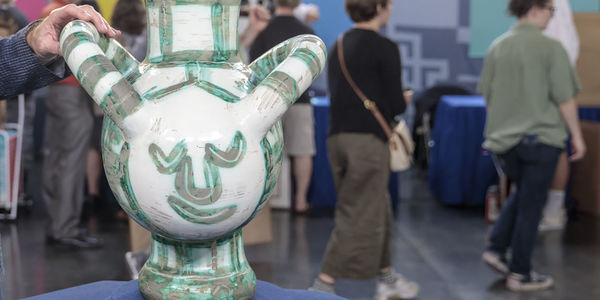
You must understand that the antiques world at that time was — Rago’s words — a bunch of “unprofessional misfits.” And not everyone felt the same way as Rago and Perrault suddenly did about the show’s potential to take the industry in a better direction. “I remember one dealer, early on, he said, ‘If Antiques Roadshow comes anywhere near me I’m going to go to the hall and roll a hand grenade into it.’ They hated it because they felt we were giving up all the secrets.
“But for me? Number one, it raises your game. It’s collegial. I’m sitting at tables with people I’ve been going hammer and tong with competitively, and now I’m colleagues with them and we’re sharing information and loving it. So it’s definitely brought the world to a smaller, better place. It’s forced us to be more professional.
“It also allows me to go out and spend money on really nice clothes,” Rago adds. “I’m into natural fibers. You can quote me.”
And how did Dan Farrell the Dealmaker manage to bring auctioneers, shop owners and independent appraisers out of their silos and get national and regional competitors to play nice in the proverbial sandbox? “I’ll tell you what overcame it,” he says. “Friday night at the bar overcame it. What group of people could have more in common to talk about?”
The appraisers were the easy sell. Far more difficult had been the television executives who’d turned Farrell down for 15 years before the agreement with WGBH. He’d been thinking the likes of A&E or Discovery Channel, but they weren’t thinking much about him. “As soon as the word ‘antiques’ came out of my mouth, I could virtually hear their eyes glaze over.”
Early on, he’d enlisted the help of Don Taffner, the Anglophile independent TV producer who’d translated the ITV sitcom Man About the House into Three’s Company and delivered comedian Benny Hill to delighted American audiences. Taffner had a New York office full of Mackintosh furniture and a posh townhouse off London’s Russell Square. No one was better suited to take Farrell’s dream under his wing, but then nothing came of it. In the 1990s, thinking he needed to show rather than tell, Farrell pulled host Monty Hall of Let’s Make a Deal fame out of retirement to create a pilot that’s never been seen except by Farrell and a few prospective partners.
All the while, he says, he avoided public television “because I entertained the idea of making money off this thing.” But by 1995, WGBH executives had seen the BBC show and felt the same tickle Farrell had years before.
The public hardly needed convincing. Publicity, not lack of interest, was the major issue during the 1996 launch tour. In College Park, Maryland, maybe two dozen people showed up all day. “We were thinking of trawling on the street,” jokes Peter Cook, one of the show’s early producers, just to get the 15 appraisals they needed to fill a show. But broadcast audiences that winter loved it. By Season 2, PBS affiliates in host cities needed to do little to lure guests. Farrell remembers waking up in Pittsburgh and opening the curtain to see crowds lined up around the convention center. In Los Angeles, Season 3, Cook says, Roadshow tied up the freeway. By the time Season 5 aired in February 2001, CBS’s 60 Minutes had caught on to the phenomenon and Farrell could fairly comment to Dan Rather that Roadshow, and not the network’s own Survivor, was America’s original foray into reality TV.
The pick
WGBH wanted to call it This Old Stuff. Farrell’s choice was The Great American Treasure Hunt. “What I never could seem to sell them on was what I truly believed about the show, which is that it isn’t about antiques at all. It’s about treasure hunting.” People want to know about their showpieces, whether they’d found their prized possession in a Dumpster, bought it for $10 at a flea market or inherited it from a tall-talking uncle. To that last point, Farrell says that Stuart Whitehurst, a Roadshow regular, has threatened to write a book he’d call Your Grandma Lied, exposing the all-too-human credulity that accompanies so many artifacts he sees in his Florida business and the typical tour stop.
The fascination driving the show, Farrell argues, is whether someone will get lucky. “We see a lot of two-figure pieces,” Rago says, though for him the excitement is not about dollar signs — not even after he finishes a mainstage appraisal in Portland of a piece of Picasso pottery that he values at more than $100,000. The pot is “large, impressive, aesthetically important,” yes, but Rago can’t connect with it.
By contrast, folk-art authority Allan Katz couldn’t believe his eyes 13 years ago when a schoolteacher approached him in St. Paul, Minnesota, with a two-foot-high, cobalt blue stoneware jug, stamped as made for Philadelphia’s Centennial Exposition in 1876, that he’d inherited from his grandmother. Quick research showed the 80-pound piece was the work of the fair’s gold-medal winner. Encouraged by Katz’s appraisal, the owner sold it through an auction house for $110,000. He bought a used Volkswagen and got a vanity plate that read “JUGBUG.” Better yet, Katz says, the teacher finally had the money he needed to adopt a child. It was Katz’s first show, and this remains his favorite story.
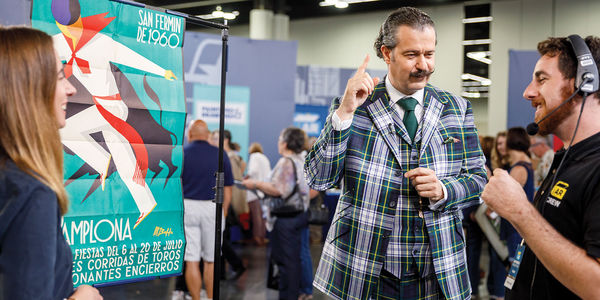
Behind these moments is the alchemy of the “pick,” the producers’ vetting of item, guest, story and appraiser enthusiasm that determines whether a piece gets taped for consideration back in Boston. So, midafternoon in Portland, we meet Paul, looking anxious as he sits on a foldout chair behind the Metalwork & Sculpture table with a crumpled paper bag in his lap. He’s casting glances at appraiser Jason Preston and fatigued producer Sam Farrell, who has tasked a runner to retrieve some “anti-inflammatories.”
Some things have a value that transcends mere dollars. But how would you appraise a television program that's become part of our national vocabulary?
Farrell is holding a smooth wooden block the size and shape of a brick, on which is mounted the hammered bronze image of a horse lying on its side. Paul uses it as a bookend and knows little about it — a plus — and Preston is telling Farrell that the late artist, Susan Hertel, was once an assistant to Millard Sheets (he of Touchdown Jesus fame, a fact that here in Portland interests no one but me). Hertel’s paintings go for $10,000 to $15,000, Preston says, but the mini-bronze appears to be a unique work, done early in her career. He thinks it could pull $2,000 at auction.
“It’s not knocking my socks off,” Farrell replies. He notes some upside: the artist is a woman, new to Roadshow; the piece is done in a Western-modern style, somewhat abstract but rippling with energy. They’re desperate for formal appraisal items in the middle, he concedes, but he isn’t sold. Maybe a shorter over-the-shoulder appraisal amidst the bustle of the floor?
The runner returns with four painkillers and a cup of water. “Oh, thank you,” Farrell says cheerfully. “I don’t need four, but are you trying to kill me? Anybody want some ibuprofen?”
He turns to Preston. “I think I’ll go with the horse.”
Paul’s sculpture does better than my baseball, which gets the polite but thorough attention of appraiser Jasmani Francis over at the Sports Memorabilia table. Several long-suffering guests roll their eyes at my media credential as I cut the line.
They saved the ball’s sweet spot for Connie Mack, Francis notes, turning the ball in his hands as he talks. That’s a point of pride for me, the signature of baseball’s longest serving and winningest manager still large and bold in the year before he retired at age 87. “I’m looking for the Fox,” he continues, meaning Hall of Fame second baseman Nellie Fox, who is on the ball. Amazingly, within seconds, Francis can tell the whole team is there (plus Cousin Ernie).
The 1949 Athletics finished fifth in the American League, and Francis has memorized the roster? He’s seen baseballs like this one before. He confers with another appraiser. It’s a souvenir, not an official game ball. Still, the potency of the signatures is strong. No game wear, which would be better, but a good baseball. “$300 to $500 at auction; $750 at most in insurance.”
That’s the number I care about, because the ball ain’t going anywhere.
Francis grins — a genuine, friendly smile. “Thank you for bringing it in.”
The final appraisal
Roadshow is reinventing itself. Next stop is Newport, Rhode Island’s Rosecliff mansion, and the American show’s first-ever indoor/outdoor taping. “The show needed freshening,” Dan Farrell explains one morning over breakfast.
I tell him about my ball and ask what he’d pick if he could bring in two items of his own. He doesn’t hesitate.
He’d take a watercolor by the late Richard Yarde, an African American painter “not well known but maybe regionally,” who taught for many years at the University of Massachusetts. It’s a New Orleans parade scene, a marching band in deep blues, reds and blacks, “very vibrant for a watercolor.”
And he’d grab his autographed 1966 national champion Fighting Irish football. “I personally went around and got everybody on the team, including Ara, to sign.” The last signature he collected was Alan Page’s. Farrell knocked on Page’s dorm room door and tossed him the football — a story he recounted to the all-American defensive end, Purple People Eater of Minnesota Vikings fame and Minnesota Supreme Court justice years later when Page ’67 was a guest on Roadshow.
Farrell gave the ball to his dad, then got it back when his father died. “It sits in a closet wrapped in tissue, and all of that. I’ve talked to some people about it. Yeah, it’s worth some money, but. . . .” His voice trails off.
Sentimental value.
Dan Farrell never took an art class at Notre Dame. He’d started in biology and switched to econ when a course in physical chemistry blew him into the liberal arts. It was a life pattern established early, deciding they were having more fun over there than he was having here and wanting a piece of that — while making a few shrewd deals along the way. It led him to banking, to the movies, to a lark on the rights to a TV show concept that looked like it would never get made. Later in life, it led to his own art consultancy and a partnership with Allan Katz to buy the 1700-piece collection that General Electric wanted to offload before moving its corporate headquarters in 2016. “One of the guys who helped me move, he said, ‘What are you going to do with all this art?’ I said, ‘We’re going to sell it and make a lot of money.’”
But some things have a value that transcends mere dollars. His work on Antiques Roadshow comprises 40 percent of his business, Farrell estimates, and if WGBH decides to cut the show, the rights to make it anew would revert to him. But how would you appraise a television program that’s endured 22 years of changing tastes and maintained its audience of millions, that’s brought professionalism and camaraderie to an industry that never valued those things before, that’s become an American institution, part of our national vocabulary?
“I do still have these ‘pinch me’ moments,” he says. “We’ve entered the popular culture. And that’s kind of fun to think about.”
John Nagy is managing editor of this magazine.
